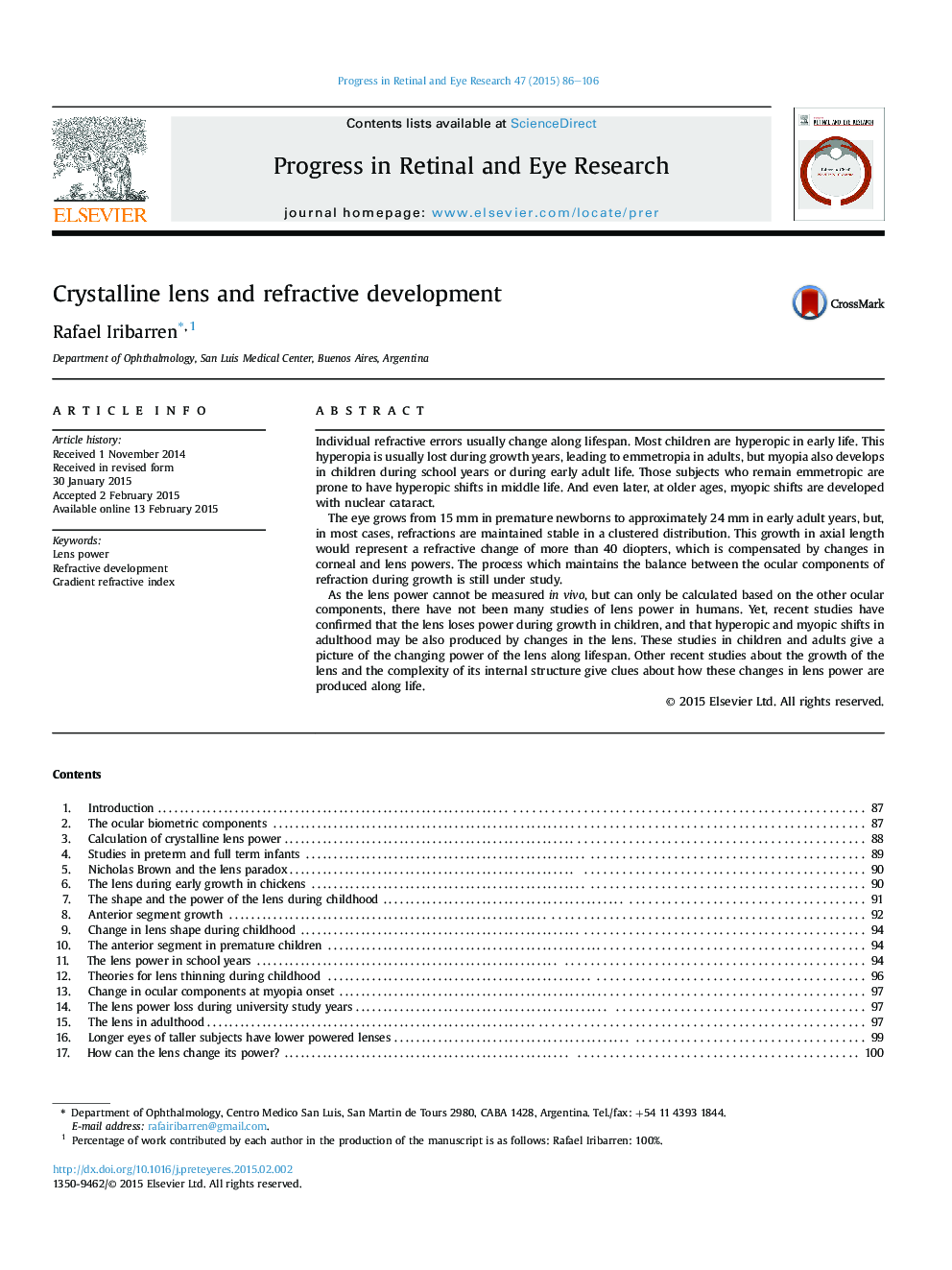| کد مقاله | کد نشریه | سال انتشار | مقاله انگلیسی | نسخه تمام متن |
|---|---|---|---|---|
| 6202706 | 1602819 | 2015 | 21 صفحه PDF | دانلود رایگان |
Individual refractive errors usually change along lifespan. Most children are hyperopic in early life. This hyperopia is usually lost during growth years, leading to emmetropia in adults, but myopia also develops in children during school years or during early adult life. Those subjects who remain emmetropic are prone to have hyperopic shifts in middle life. And even later, at older ages, myopic shifts are developed with nuclear cataract.The eye grows from 15 mm in premature newborns to approximately 24 mm in early adult years, but, in most cases, refractions are maintained stable in a clustered distribution. This growth in axial length would represent a refractive change of more than 40 diopters, which is compensated by changes in corneal and lens powers. The process which maintains the balance between the ocular components of refraction during growth is still under study.As the lens power cannot be measured in vivo, but can only be calculated based on the other ocular components, there have not been many studies of lens power in humans. Yet, recent studies have confirmed that the lens loses power during growth in children, and that hyperopic and myopic shifts in adulthood may be also produced by changes in the lens. These studies in children and adults give a picture of the changing power of the lens along lifespan. Other recent studies about the growth of the lens and the complexity of its internal structure give clues about how these changes in lens power are produced along life.
Journal: Progress in Retinal and Eye Research - Volume 47, July 2015, Pages 86–106
